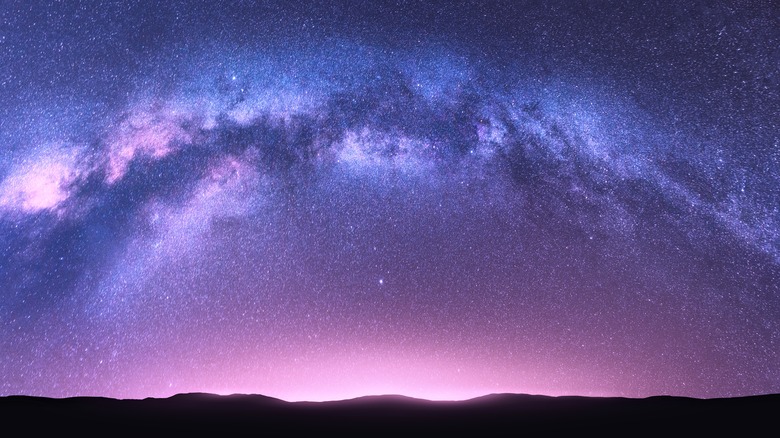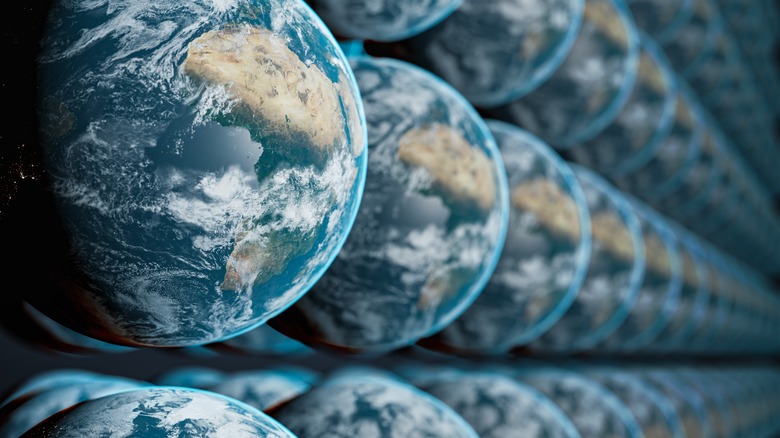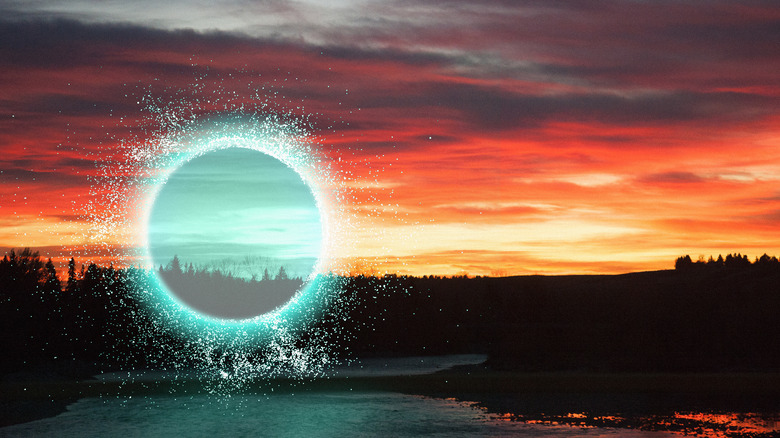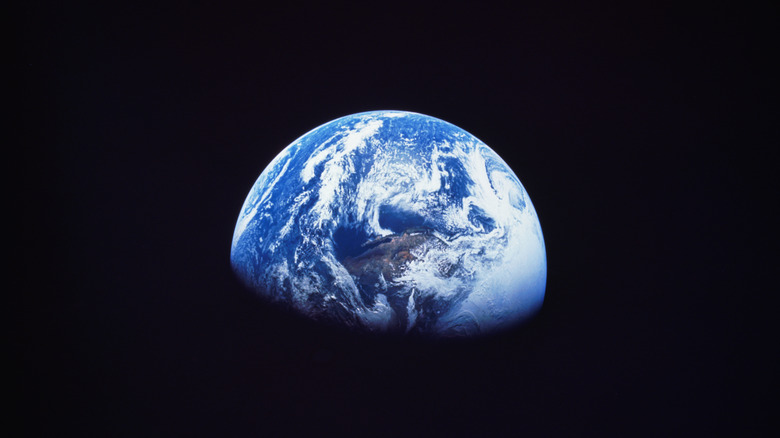Is The Multiverse Actually Scientifically Possible?
So we all know about the multiverse, right? One day a physicist somewhere thought, "Man, I wish I'd played in the NBA instead of sitting around doing math all day," and bam: instant childhood fantasy fulfillment meets theoretical physics. And then there's that Marvel movie, that other Marvel movie, and the DC one, and the one with like three Spidermen that was actually pretty solid and better than you were expecting, especially Andrew Garfield. And somewhere in there, drowning in the morass of fictional portrayals, evidence-less reality, the religious zeal of multiversal proponents, and grounded reservations of skeptics rests the truth of the multiverse: It's not a thing.
Okay, it could be a thing, but only in the way that God is a thing because its existence can't be disproven — yet. But, how to gather data on the multiverse? Behold the conundrum: 1) The universe, by definition, is that which contains everything that is, and, 2) To test for another universe we would have to test outside of all that is, therefore, 3) Science = impossible. And yet, some researchers point to the oldest light in the universe — cosmic background radiation (CBR) — as holding multiversal clues, per a collaborative paper at Cornell University.
Ultimately, physicist and multiverse roaster supreme Sabine Hossenfelder puts it best in The Guardian: "These [multiverse] ideas are all possible — they're all compatible with the observations that we have. But I would call them ascientific –- the kind of idea that evidence says nothing for nor against."
Many multiversal paths
Many folks might not realize it, but when we talk about "the multiverse," we're actually talking about a variety of hypotheses, particularly the many worlds, eternal inflation, and infinite repeating space interpretations. Each proposes a different way that we could live in a multiverse.
The many worlds interpretation is what people most commonly envision when thinking of the multiverse: a duplicate cosmos where everything is the same except you chose to wear red shoes today, or the Nazis won World War II — things like that. In other words: nifty "what if?" sci-fi daydreams. As The MIT Press Reader explains, the many worlds interpretation has roots in quantum mechanics, whereby unmeasured particle states do exist (up, down, clockwise, counterclockwise, etc.), but in their own universe.
The eternal inflation interpretation was posited by physicist Alan Guth and has roots in the Big Bang. As Scientific American overviews, the Big Bang wasn't an explosion in the way we think of it, but a rapid expansion — aka inflation — of space. But while inflation never stops, as Guth says, certain areas of space stop expanding and bubble into their own, pocketed universe. Hence, the multiverse is a collection of overlapping universes like frog eggs.
Finally, the infinite repeating space interpretation goes back to physicist Roger Penrose, who proposed that the universe continues to spawn subsequent universes, from one Big Bang to another, as Aeon describes. This notion, dubbed Cyclic Conformal Cosmology (CCC), creates a multiverse of sequential, ultimately infinite universes.
Testing the untestable
So how could we gather evidence on other universes if the universe is all that exists? After all, even the most speculative, magic-sounding science needs to have grounds in real, measurable physics to be more than a mere thought experiment. This is the biggest criticism of multiverse interpretations, as various physicists articulate in Smithsonian Magazine. Carlo Rovelli says that modern physicists are "wasting time following a third way" to gather knowledge beyond expanding on current theories or developing hypotheses based on observable data. "This has never worked in the past and is not working now," he said.
And yet, there might be a way to check for the existence of other universes, or least at find points where they bubbled from or collided with our own universe. As the University of Oxford's Mathematical Institute explains, the answer may rest in cosmic background radiation (CBR), the oldest light in the universe that shows a picture of the early cosmos in terms of the distribution of matter, hot and cold patches, etc.
In a very succinct nutshell, a detailed paper on Cornell University postulates that some of the CBR's blank spots may indicate locations where our universe either bubbled another universe or collided with one. In an experiment, they supercooled gas to the point where the gas created bubble-like structures from quantum energy fields that wound up resembling CBR's patterns. Ultimately, these findings could lead to later tests, and merge all existing multiverse interpretations into one theory.
Evidence of fantasy
To be fair, a number of physicists think that the multiverse is at least possible. But even a popular science communicator like Neil deGrasse Tyson admits on Popular Mechanics that it's more of an idea that facilitates creative thinking than anything else, saying, "Just because you can't experimentally verify something now doesn't mean you shouldn't keep thinking about it, because later solutions might arise that will make that possible." More soberly and poetically, the late, great Stephen Hawking admitted that eternal inflation led naturally to a multiverse "like an infinite fractal, with a mosaic of different pocket universes, separated by an inflating ocean," per Science Alert. Even so, he said that he had "never been a fan of the multiverse" because it "can't be tested."
Barring the recent research into cosmic background radiation, there really aren't any other leads into checking for a multiverse. Other lines of investigation, as Forbes explains, involve increasingly ridiculous, sci-fi scenarios like entering wormholes that tunnel to other universes. Ultimately, per Forbes, "there is zero evidence for other universes," and referring to notions of the multiverse as a "theory" is inherently misleading because words like "theory" imply something substantiated and true.
At the very least, fascination with the multiverse reflects the escapism of the times, and a desire to believe that things could have gone — and could go — another way. But even as the multiverse continues to enchant, it's best not to lose sight of the one, guaranteed universe we've actually got.



